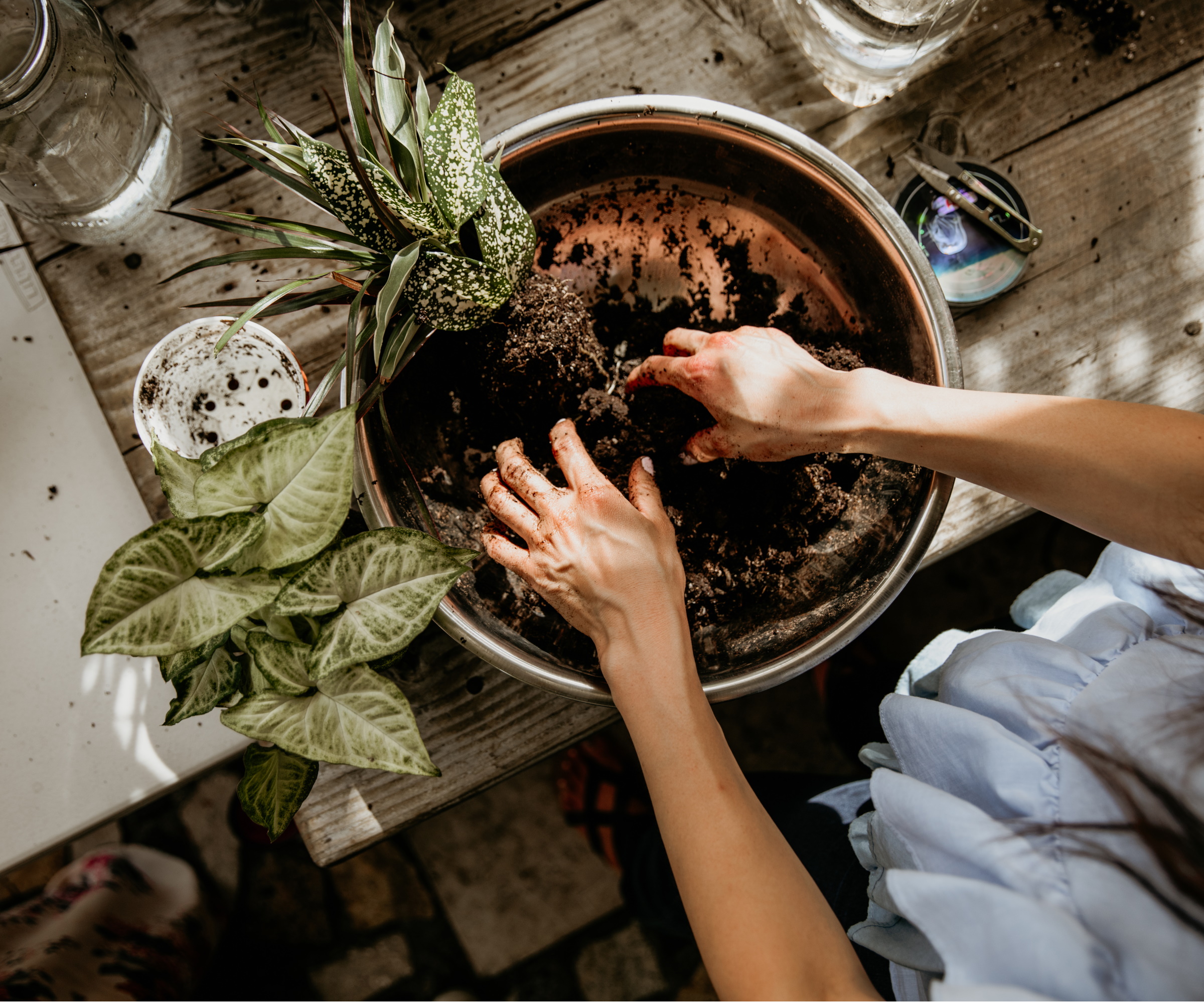
Kokedama is a stylish way to display your indoor plants. It's a Japanese gardening technique where plants are grown in moss balls, and it's used as a unique alternative to hanging plants.
'Kokedama is a Japanese term referring a ball of soil, covered with moss, on which an ornamental plant grows,' says Claudia Henao, a kokedama instructor at Morikami Museum and Japanese Gardens in Florida. 'Koke means moss and Dama means ball,' she adds.
It's usually tied together with string and can be suspended, both indoors or as an alternative to hanging baskets, but you can also sit it on a surface such as a plant shelf.
Nearly any indoor plant can be displayed using kokedama. Classic looks often incorporate trailing plants like ivy or pothos, but it is possible to grow most houseplants in this way.
While it may look intimidating, it's actually very easy to make your own kokedama. We've enlisted expert advice on how to create a DIY kokedama and add dimension to your houseplant displays.

How to make kokedama
If you're a houseplant lover who likes a bit of DIY and wants to add a unique touch to your indoor garden, why not make your own kokedama? We've asked the experts how to do it in three simple steps.
There are just a few things you will need:
- Heavy soil components - such as keto soil and peat moss
- All-purpose potting soil
- Water
- Plants of your choice
- Sheet moss
- String
You can also find plenty of kits online, such as this kokedama kit from Amazon, which provide all of the materials for you.
1. Combine soil and water

The first thing to do when creating your own kokedama is ensure your potting mix is suitable not only to hold the shape well but also to provide your chosen plant optimal conditions.
'First combine equal amounts of peat moss and potting soil in a bucket,' says Virginia Hayes, indoor plant expert at Westerlay Orchids.
It is suggested to use heavier soil components for kokedama, whether that's peat moss, keto soil or akadama soil, much like what is used for bonsai trees. This will make it easier to mold and keep its shape.
Using equal parts of the heavier components and regular potting mix, combine your soil together.
'Add enough water to create a consistency similar to dough,' says Virginia.
You'll need to be prepared to get a little muddy in this process, but it's key to add a bit of water at a time until you are able to create a dough-like substance.
2. Prepare your plants

Now that you have your kokedama dough mixture ready, you'll need to ensure your plants are in good condition.
'Remove any excess dirt from the roots of the chosen plants with care,' says Virginia.
Smaller plants are sometimes best for kokedama because they are easier to handle when combining with the soil ball, such as succulents or orchids, Ensure they have been pruned back to have healthy foliage and that roots are clean.
You can then mold your soil mixture around the roots of the plant, making a ball shape.
'Make sure the soil mixture is firm and holds together around the plant's roots,' says Virginia.
3. Cover in moss

The final step is what gives kokedama its iconic appearance - adding moss.
Take a sheet of fresh moss on a flat surface and place your ball on top. You can begin wrapping the moss sheet around the ball, taking care not to damage any foliage of the plant.
It doesn't matter if the ball is wrapped roughly at this stage, so long as you are covering all of the soil to keep it contained within the moss. You will then want to tidy up the moss and secure it in place by tying it with string.
'Secure the ball with water resistant string or fishing line,' suggests Claudia.
And it's as simple as that. You can now hang your kokedama plant, or display it on a surface.
Just be sure to keep on top of care for both your plant and the moss. 'Care depends and varies on the plant you are planting. Similar as if it had been planted in a pot,' says Claudia.
Shop kokedama materials online
This clear fishing line is composed of a co-polymer nylon infused with fluorocarbon.
Multi-use peat moss soil media which allows plants to absorb15-36% more water and nutrients.
FAQs
How do you care for kokedama plants?
There is no single set of instructions to care for kokedama plants as it will depend on the plant being grown in it. However, it is always important to place your kokedama in a well-lit space where the moss outing can receive plenty of natural light. You may also choose to regularly mist your kokedama. These things will help keep your moss ball healthy and looking bright. Always take care to provide optimal conditions for the plant you are growing in your kokedama.
Kokedama is a beautiful way to display your indoor plants and it can really elevate your houseplant collection. They're easy to make with just a handful of materials. If you enjoy Japanese gardening styles and techniques, you might also be interested in finding out more about zen gardens.







